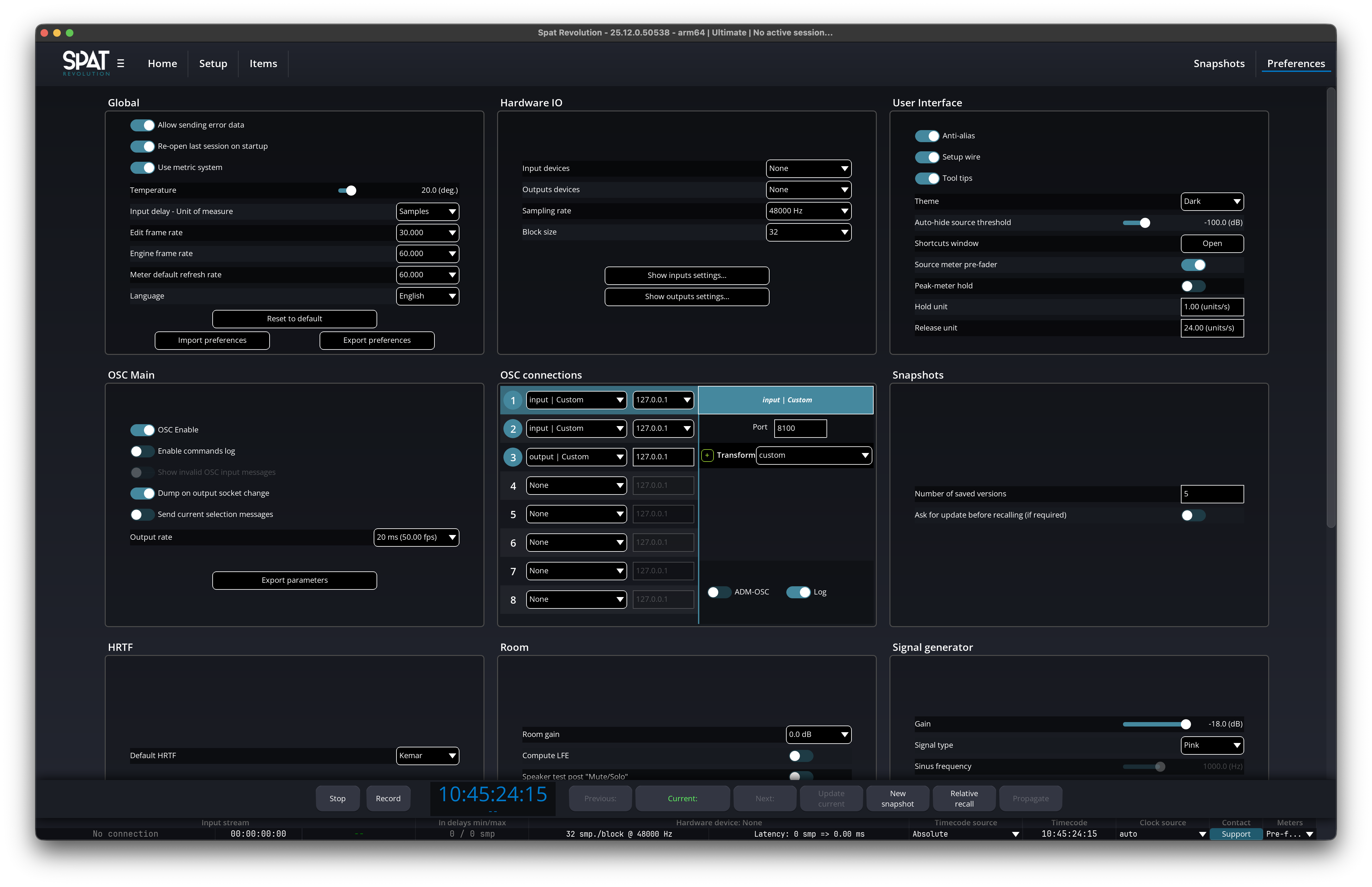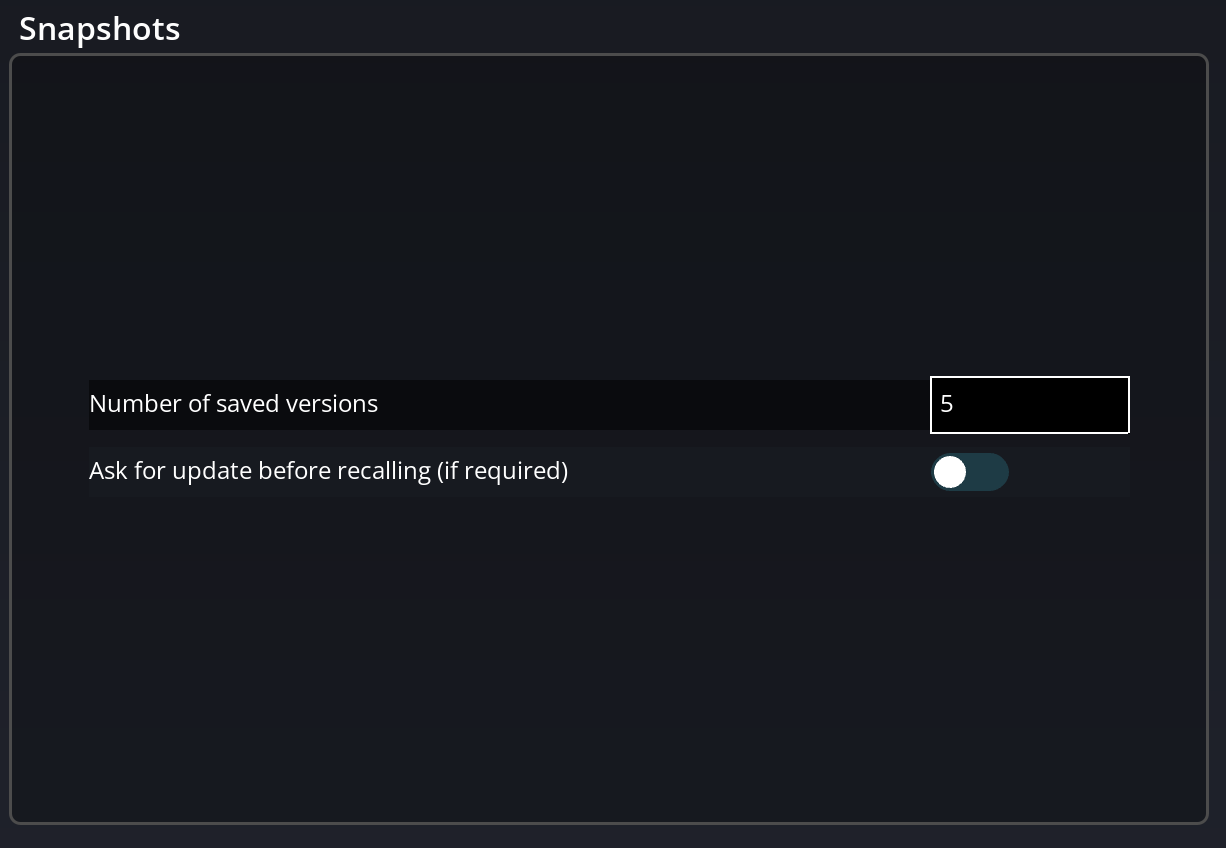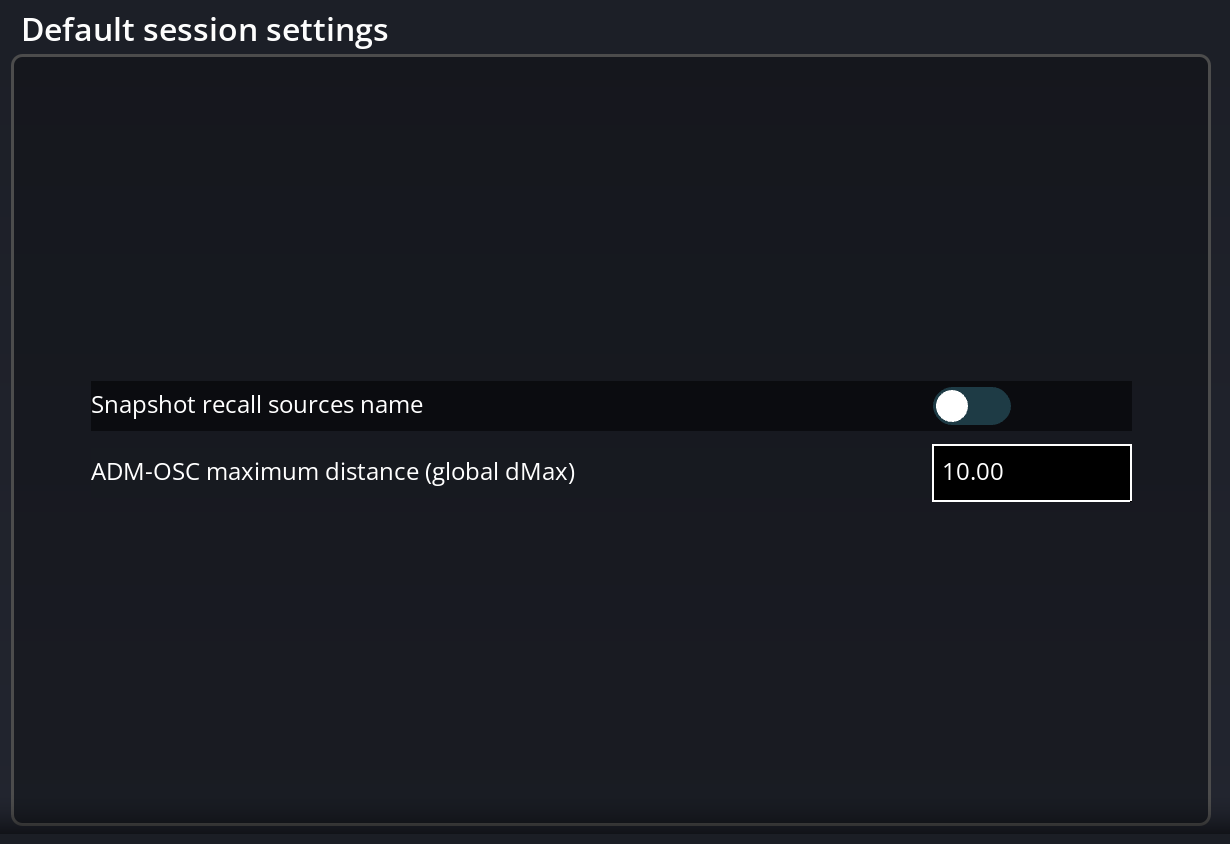Application preferences
This page allows you to change the global preferences of the application.
Global
Allow sending error data
Allow sending error data to FLUX:: support. All the data are sent anonymously.
Off by default
Reopen last session on startup
The last opened session will be automatically reopened at the start of SPAT Revolution.
On by default
Use Metric System
Toggle between the imperial system and the metric system.
On by default
Temperature
Change the temperature used in the delay line calculation.
Default is 20 °C
Input delay - Unit of measure
Change the unit format for the delay.
Default is sample
Edit Frame Rate
Define how many times per second the UI is refreshed.
Default is 30 Hz
Engine Frame Rate
Define how many times per second the engine is refreshed.
Default is 60 Hz
Meter Default Refresh Rate
Define how many times per second the meters are refreshed
Default is 30 Hz
Language
Allow to change the language of SPAT Revolution. English, Italian, German, Korean, French, and Spanish are available. If you wish to help us to translate SPAT into another language, don’t hesitate to contact us.
Default is English
Reset to default
Reset back all the global parameters to default.
Import/Export Preferences
Allow exporting or import preferences.
Hardware IO
The hardware IO panel allows choosing the audio interface that can be accessed by SPAT Revolution.
Input/Output Devices
This menu allows selecting the audio interface. SPAT Revolution audio engine supports all devices compatible with ASIO (Windows) or CoreAudio (macOS).
Note that you should select “None” when using the Local Audio Path connections.
SPAT Revolution audio engine also supports different input and output interfaces, on both macOS and Windows, for maximum flexibility.
In the case of different input and output devices, the sample rate and the block size need to be the same.
Sampling Rate
Select the sampling rate used by the audio engine.
Block Size
The block size defines the global latency added by SPAT Revolution. The lower it is set, the lower the latency is, but the greater the CPU consumption is.
Show input/output settings
This button opens the driver audio panel of the selected interface, if it exists.
User Interface
This panel contains some general user preferences.
Anti-Alias
When enabled, this option smooths out lines in the graphic engine. If you are using an Intel-based computer without a dedicated GPU, we highly recommend deactivating this option to improve performance.
On by default
Setup Wire
When on, the wires between blocks in the setup page are splined. When off, they are straight.
On by default
Tooltips
Tooltips contain help and complementary information. When on, they are displayed when the mouse is over a parameter or a control.
Theme
Allows switching between the dark theme and the light theme of SPAT Revolution.
Set on “dark” by default
Shortcuts window
Display the list of all the shortcuts of SPAT Revolution.
Source meter: pre or post fader
Choose whether the source meter reflects the signal before or after the fader and mute. You can also quickly toggle this from the right side of the status bar.
Peak-meter hold option
When enabled, meter peaks are held indefinitely. To reset the peaks, press P or use the “Reset Peaks” option in the View menu.
Hold & Release Speed
Adjust how fast the meter decays (both for signal and peaks) using this setting. It defines the decay rate per second, and applies for the Hold when peak hold is disabled.
OSC Main
This panel contains basic OSC options.
OSC Enable
Enable or disable the OSC communication between SPAT Revolution and other devices.
Enable commands log
Allow displaying the OSC messages in the application’s console.
Show invalid OSC input messages
Allow displaying the unknown and invalid OSC messages in the application’s terminal.
Dump on socket change
Allow to dump all properties when a socket changes, i.e. when the IP address or the port number has been edited, or the socket is enabled. This ensures a constant synchronization between any remote control and SPAT Revolution.
Send current selection messages
Allow sending a particular message for the source selection. For example, for the gain, the /source/-1/gain will be sent each time the selection gain change.
Output rate
Define OSC output rates in milliseconds.
Export Parameters
This button exports the OSC parameters to a text file.
OSC Connections
This panel allows the creation of an OSC connection between SPAT Revolution and other devices, like tablets, phones, computers and many others. More information is available on the OSC section Open Sound Control.
Snapshots
Number of saved versions
Determines the number of versions saved when updating a snapshot. Careful: increasing this number increases deeply the size of the .json SPAT file.
Ask for update before recalling
When checked, a dialog will ask you if you want to update the snapshot before each recall.
HRTF
The HRTF panel allows setting up some generic options for HRTF handling.
Default HRTF
Choose the default HRTF used in the binaural room or binaural monitoring blocks
Manage HRTFs - Ultimate license only
The button opens a window that allows downloading or removing HRTF. You can also import your own HRTF from this menu.
Room
This panel allows changing some room properties.
Room gain
Change the gain of all the rooms of SPAT Revolution.
Compute LFE
Off by default, this option allows including the LFE position in the computing of the speaker alignment process.
Speaker test post “mute/solo”
Change the behavior of the signal generator for speaker, pre or post-speaker’s mute and solo.
WFS default truncation distance of Efficiency zone for linear antenna
Add a distance offset to the efficiency zone when using WFS with a linear antenna to avoid issues with the focus zone.
Signal Generator
Here, you will find the options related to the test signals generated by the application itself.
Gain
Configure the signal generator gain.
Signal Type
Configure the type of signal generator.
Sinus frequency
Configure the frequency of sinus.
Sweep start frequency
Configure the start frequency of sweep.
Sweep end frequency
Configure the end frequency of sweep.
Sweep time
Configure the time sweep.
Engine
This panel allows to modify the behavior of the SPAT Revolution engine.
Automation
Automation Rate
Define the automation rate in milliseconds.
Audio Processing
Max Number Of Cores
Define the number of CPU cores used by the engine.
Parallel Profile
Define how the CPU resources are spread among the cores available. In Max Distribution mode, the CPU resources are evenly spread among the available cores. In Favor First Core, the engine will fill the CPU cores one by one. The Balanced Distribution mode is a compromise between both.
BlackTrax RTTrPM - Ultimate license only
See the integration chapter about BlackTrax BlackTrax integration
Default Session Settings
Define default values of session parameters.












